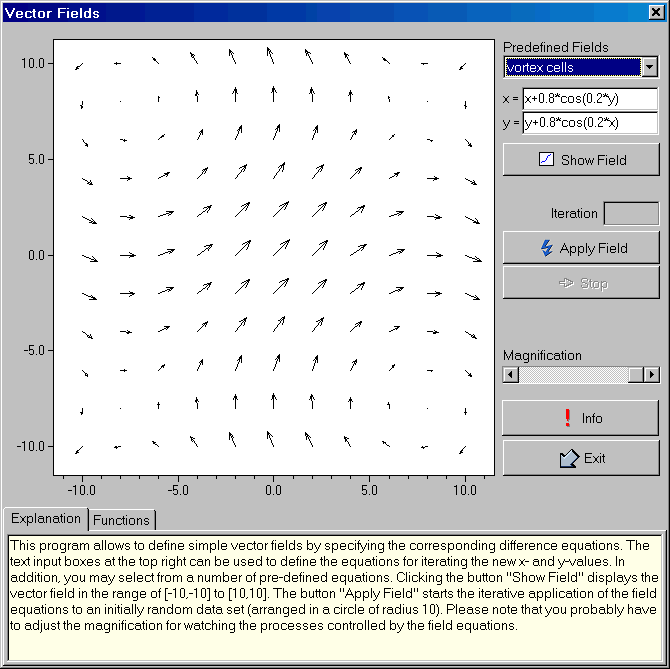| Learning by Simulations has been developed by Hans Lohninger to support both teachers and students in the process of knowledge transfer and acquisition . Click here for more information. |

Home  Mathematics Mathematics  Vector Fields Vector Fields |
|||||||||
| See also: Electric Field of Point Charges, Ion Optics, Function Plotter | |||||||||
Share this Page:







A vector field is a field which associates a vector to every point in the field space. Vector fields are often used in physics to model observations which include a direction for each point of the observed space. Examples are movement of a fluid, or the force generated by a magnetic of gravitational field, or atmospheric models, where both the strength (speed) and the direction of winds are recorded. The effect of vector fields can be easily calculated by applying difference equations to all points of the observed space. Thus the state of each point of the space R at the time T+1 is calculated by applying the difference equation to each point at the time T. For example, using the two equations xt+1 = xt - yt and yt+1 = yt + xt will result in a rotation of the points in a two-dimensional space. Another transformation which creates two vortices is shown in the screen shot below:
|
|||||||||
Last Update: 2012-Jul-14



